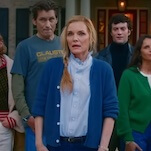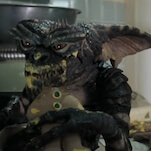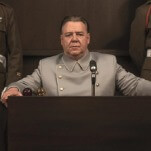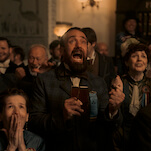I Stand Alone

I Stand Alone, Gaspar Noé's raw, corrosive, and relentlessly provocative response—part companion piece, part critique—to Taxi Driver unfolds with rare force and clarity of vision, rarer still for a director's first feature. Violence permeates every frame, most of it inside the head of Philippe Nahon, a nameless middle-aged butcher with flat features and a permanent stony scowl, like Archie Bunker in rigor mortis. His near-constant narration stands in sharp contrast to Robert De Niro's more lacquered and seductive tones; Nahon's internal monologue is a bilious flurry of hatred and rage, with the words zipping by as rapidly as a raving derelict's. Noé also gives his God's Lonely Man a past: Through an ingenious and bleakly funny slide-show sequence—one of several cinematic tricks the film pulls off effectively—he tracks every step of Nahon's luckless upbringing. Born into extreme poverty and orphaned at an early age, he hasn't improved his station in life in the 50 years since, and as the film opens, he's unemployed and residing in a ratty tenement outside Lille, an industrial city in northern France. I Stand Alone catches him just as his anger is beginning to bubble over into action; imagined off-screen gunshots, delivered with the unnerving pop of the firecrackers in Boogie Nights, threaten to become real at any given moment. Not everyone will take well to Noé's ugly worldview, but I Stand Alone is, in the end, a profoundly moral attack on social injustice. While he doesn't look upon his anti-hero with anything akin to sympathy, he understands how people can respond when everything they possess jingles in their pocket.







































